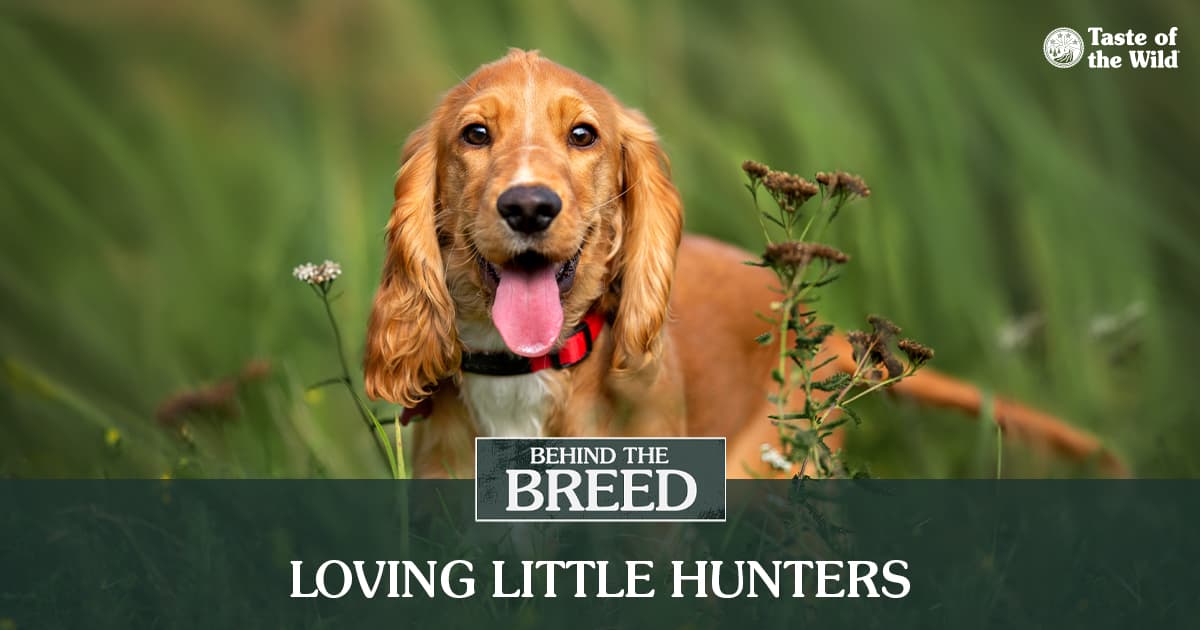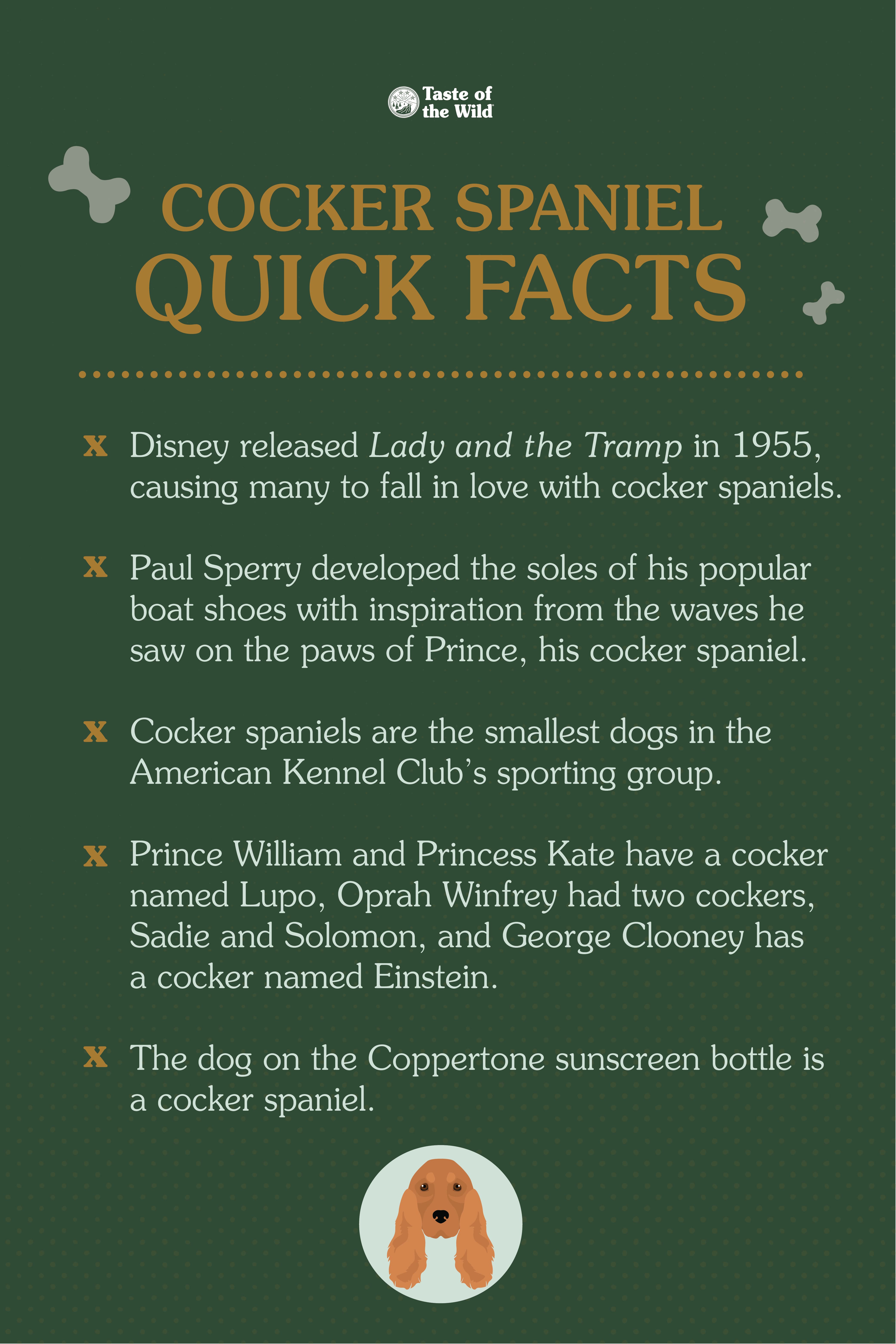
Though they originated in England, cocker spaniels may have been counted among the first guests at the American Thanksgiving table. Records and ships’ manifests indicate that there were two dogs aboard the Mayflower when it landed in New England in 1620 — a mastiff and a cocker spaniel. Now, cocker spaniels are counted among the most beloved, merry and frolicsome of all breeds.
Originally bred to hunt, the breed gets its name from the term “cocker,” referring to their use in flushing out Eurasian woodcock, a type of wading bird. These “gun dogs” are bred to use their keen sense of smell to stay low to the ground and flush out birds for hunters. Not ones to rest on their laurels, these well-rounded sporting dogs then use their sharp eyes to locate the downed birds, and then they retrieve the fowl.
An American Original
Refinements to the English version of cocker spaniels led to the more Americanized breed, which was officially recognized by the American Kennel Club in 1878. Purposefully bred smaller in the States because American woodcocks are also smaller, the breed’s appearance changed slightly as American breeders preferred a more stylized look. American cockers are smaller with shorter backs, have a more domed head and shorter muzzle, and are generally shorter. American cockers are between 14.5 and 15.5 inches at the withers for males (a little shorter for females) and their typical weight is between 20 and 24 pounds. American cockers are broken into categories for judging in the sporting group based on their coats: black, black with tan points, parti-color, and ASCOB (any solid color other than black).
Grooming is Key
They require a bit of dedicated grooming to keep their coats long and luxurious. Ear issues can arise if you don’t keep their ear canals clean, and keeping them groomed is important in warding off any skin problems.
Easy to train, cocker spaniels are rock stars in a whole host of companion events including agility, rally/obedience and nose work, and their personalities help them excel as therapy dogs. They are considered loving, affectionate and great additions to the family.
To read more about similar hunting dogs, like the Boykin spaniel or Brittany spaniel, bookmark our blog.

RELATED POST: Behind the Breed: Dachshund
The information in this blog has been developed with our veterinarian and is designed to help educate pet parents. If you have questions or concerns about your pet's health or nutrition, please talk with your veterinarian.
